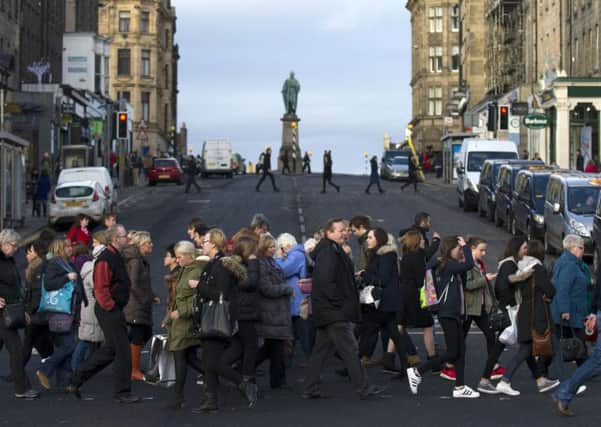Alastair Dalton: Simpler crossings could be the answer for our roads


A lone walker is accosted on the empty pavements by a robotic police car and taken to the “Psychiatric Center for Research on Regressive Tendencies”.
It was an extreme vision of the future – 2053 – written before the age of mass car ownership, but some campaigners feel an element of that persecution in trying to win the simple right to cross the road safely.
Advertisement
Hide AdAdvertisement
Hide AdIn Scotland, there has always been a presumption – in the minds of drivers, if not the authorities – that the car comes first. Those on foot must wait until the road is clear of vehicles, when there is no green man or zebra crossing.
Even then, pedestrians sometimes have to wait well over a minute for the lights to change. In some city centres, there are two cycles of green lights for vehicles between every green man. However, if you try to lobby for a new crossing on a busy road, it appears the odds are stacked against you.
In the Wester Hailes area of Edinburgh, a father is at his wits’ end in his fight for crossings on roads where he has to wait for minutes at a time while taking his child to nursery. He’s been told by the city council there is no case for extra crossings there, or they are too expensive.
However, pedestrian campaigners Living Streets argue it’s a catch 22 – lack of crossings discourages pedestrians, so it appears few want to cross, so there’s no case for a crossing.
The campaigners believe there have been similar cases across the city – and in other council areas.
Councils may argue that crossings are expensive to install, with traffic lights and the other paraphernalia involved, such as fencing on either side of the road and around traffic islands.
In part, I’m told that local authority officials are constrained by strict design regulations, which some experts believe over-engineer crossings and add unnecessary costs, which can make them unaffordable.
This is significant when councils’ coffers are ever more tightly squeezed.
Advertisement
Hide AdAdvertisement
Hide AdLiving Streets said most of the funding for crossings comes from Scottish Government grants for cycling, walking and “safer streets”, but that has been frozen.
But it’s not all bad news. Edinburgh has added a few new crossings, such as one in the west end opposite St Mary’s Cathedral, on Grosvenor/Lansdowne Crescent near the junction with Palmerston Place.
This one has black and white stripes across the road, but no zebra crossing-style flashing orange beacons.
In fact, at face value, it looks like the crossing has been built at minimal cost, with new paving in the centre the only obvious other addition.
The crossing looks a bit like some of those in France, where last year, I came across black and white lines painted across pretty much every junction in the town where I was staying.
Drivers are more cautious when approaching intersections, and on the look out for people wanting to cross the road, while pedestrians have more confidence by being on readily recognisable crossings. That simple.
It is perhaps not surprising, then, to learn that the aggrieved father in Wester Hailes happens to be French, and understandably can’t fathom why Edinburgh’s roads officials don’t follow the practice of his homeland. Or maybe they are starting to take the hint?